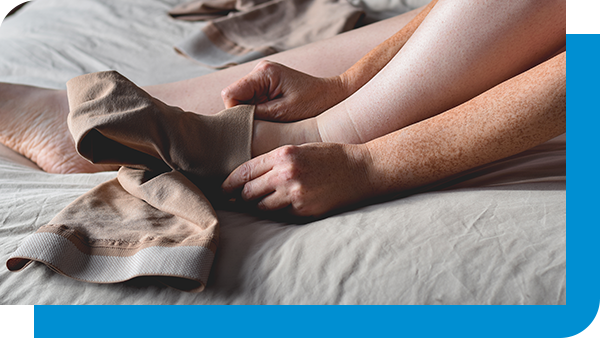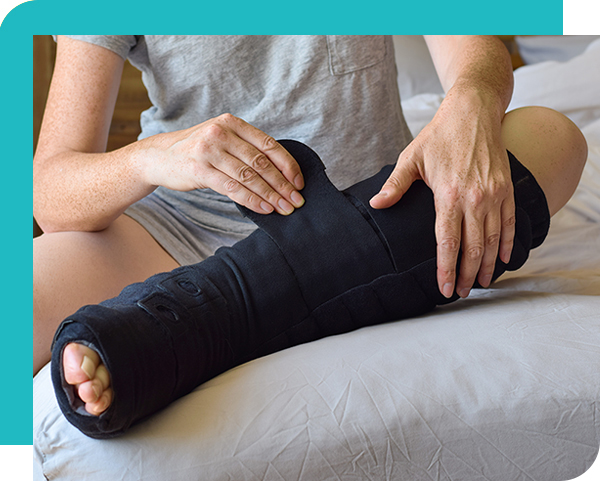Menu
Your healthcare professional will prescribe the level of compression required for your affected limb, taking into account any underlying conditions. Caution should be exercised in cases of arterial insufficiency, neuropathy, uncontrolled heart failure, acute cellulitis, or acute thrombophlebitis.

Generally, teamwork between the therapist and orthotist fitter will determine the garment that’s right for you. They will choose from:
It is vital that your garment fits properly. If it doesn’t, you’ll injure yourself or stop wearing it, exposing yourself to serious complications.

As you can see, your care team is made up of the physician for diagnosis and prescription, the therapist for decongestive treatment, and the orthotist-adjuster for maintenance. Don’t forget that you are the person at the center of this team. So try to clearly express your needs and your appreciation of the garment designed for you. Present supporting photographs to show any irritation or possible tourniquet on the skin.
Assemble your team and become the link between the various parties involved. You have everything to gain!
To find an orthotist-adjuster in your community, consult the LAQ Resource Guide.
The synthetic fiber in compression garments wears out naturally over the months. For this reason, your daytime compression garment should be renewed every 4 months, while your nighttime garment and non-elastic velcro garment should be renewed once a year. This frequency is based on what science tells us. So don’t neglect these purchases, for which the RAMQ program covers up to 75% of the cost.
Unless renewed regularly, a garment with less effective compression can cause increased swelling, expose you to more heaviness and discomfort, and ultimately lead to poor lymphedema control.
Since forgetting is human, the LAQ has come up with a solution! The LAQ has teamed up with the Association des orthésistes prothésistes du Québec (AOPQ) to create a reminder card for renewing your garments. When your fitter is a member of the AOPQ, he or she can send you a friendly reminder by e-mail or regular mail, inviting you to renew your garments on time. That is, before they no longer optimally control your lymphedema. Ask your fitter to sign you up for this reminder system.
The Lymphedema Association of Québec provides support, education, and awareness to people living with lymphedema, as well as their families, friends, and healthcare professionals. We provide information and educate about lymphedema and its causes, risk reduction, and treatments for this chronic disease, and encourage scientific research leading to a cure.
Lymphedema Association of Québec
Therapeutic Support Program
1 866 979-2463
514 979-2463
Mailing address
CP 152, Bureau Chef Branch,
Saint-Hyacinthe,
QC, J2S 7B4
Telephone
1 866 979-2463 / 514 979-2463
Email
aql@infolympho.ca
Website
www.infolympho.ca
© 2023 Lymphedema Association of Québec. All rights reserved. | Credits